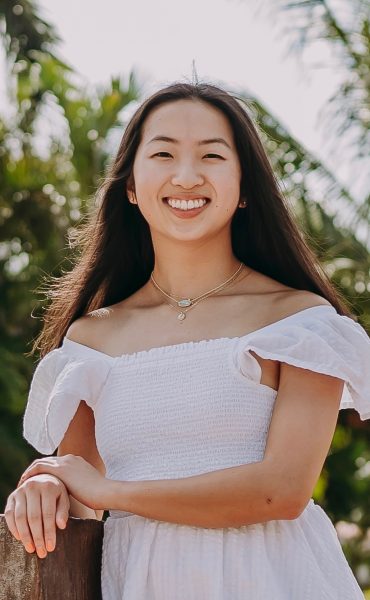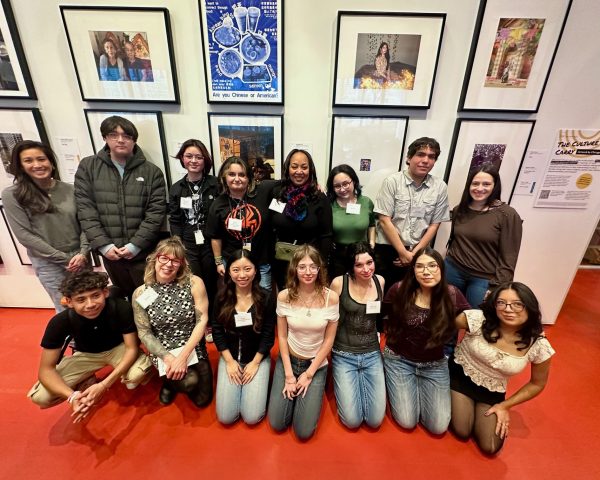Students react to new emojis
There are hundreds of emojis on Apple’s keyboard ranging from smiley faces to a smiley pile of poop; however, many racial groups had been left out of this collection.
For the first time since Apple’s inclusion of Emoji in a 2011 update, racially diverse emoji have been added to the newest software update, iOS 8.3. This update, which has been in beta for several months, brought 300 new emoji to the keyboard. The new emoji include five new skin colors in addition to the original fair skin tone. The default color is no longer this fair skin, and is now a yellow tone meant to be racially neutral. Students such as Starr Briscoe, Div. 557, are excited about this emoji addition.
“People use emoji to express all types of emotions and feelings and I think it’s cool to have one that can actually express you, by looking like you,” she said.
Briscoe is African-American and has not been able to use an emoji that represents her own skin color for the past few years.
“I think that it just took them time to realize that people wanted more diverse emojis and that they are important to how people express themselves,” Briscoe said.
Charles Tharpe, Div. 581, has also been using the new emoji and is happy with the addition, but thinks it should have happened sooner.
“I think it took so long because it never was really addressed until the last year,” Tharpe said. “People never felt bothered by the fact that the emoji they used on a regular basis weren’t like them physically.”
Prior to the release, many celebrities advocated for this addition. Miley Cyrus, for example, sent out a tweet in 2012 that said “RT if you think there needs to be an #emojiethnicityupdate.” Discussions such as that one from Twitter spurred a movement for more diverse emoji in an Apple update.
A petition was started on Dosomething.org in March 2014 to diversify emoji. Part of their campaign was that there was a great imbalance in ethnic representation.
The website read: “Of the more than 800 Emojis, the only two resembling people of color are a guy who looks vaguely Asian and another in a turban. There’s a white boy, girl, man, woman, elderly man, elderly woman, blonde boy, blonde girl and, we’re pretty sure, Princess Peach. But when it comes to faces outside of yellow smileys, there’s a staggering lack of minority representation.”
This representation of different groups was an issue to many people because a large number of the people using these emoji were not white, while almost all the emoji represented fair skinned people.
Lilianna June, Div. 572, is both white and Hispanic and is very glad about the increase in diversity.
“Many minorities and other social groups have been misrepresented for too long,” June said. “I can’t imagine what it’s like to grow up feeling unnoticed.”
These new emoji have allowed for more personal expression; however, many believe this is only a stepping stone that follows a very long pathway.
“I think that with the popularity of technology, different races and skin colors should be exposed to the world,” Tharpe said.
Tharpe believes more diverse emoji should also be added such as a black Santa Claus or a black dancer.
June also believes this has not fixed the unfair representation of minority groups.
“A few emojis in different races isn’t where this should end,” she said. “A few ethnic pictures will never make up for the pain and trauma they have suffered from racial inequality.”
Though many are happy about this emoji update, it has also been used in a negative way. The inclusion of different racial groups have given people a new way to express themselves but also another outlet for racism. Tharpe has witnessed this himself.
“I’ve witnessed it on Twitter, where people take advantage of the racial emojis, and that’s just how society is.”
June sees this racism too but sees acceptance as well.
“Some people will use the emojis to be racist and bigots, but for the most are being very open about the change,” she said.
Your donations directly fund the Lane Tech student journalism program—covering essential costs like website hosting and technology not supported by our school or district. Your generosity empowers our student reporters to investigate, write, and publish impactful stories that matter to our school community.
This website is more than a publishing platform—it's an archive, a research tool, and a source of truth. Every dollar helps us preserve and grow this resource so future students can learn from and build on the work being done today.
Thank you for supporting the next generation of journalists at Lane Tech College Prep!

Cori Meyers is one of the online editors and one of the managing editors for The Warrior. She is a senior at Lane and is also captain of the majorettes....



